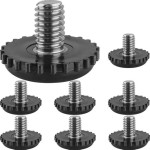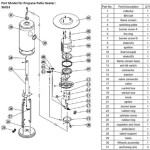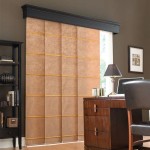Fabric Paint For Patio Umbrella: Reviving Outdoor Shade With Color and Durability
A patio umbrella provides crucial shade and comfort, enhancing the usability and enjoyment of outdoor spaces. Over time, however, the fabric of a patio umbrella can fade, become stained, or simply lose its visual appeal. Replacing an entire umbrella can be costly and wasteful. An alternative solution is to use fabric paint to restore or transform the umbrella's appearance, extending its lifespan and allowing for personalized design.
Fabric paint offers a flexible and durable way to update the look of a patio umbrella. It allows for a wide range of creative possibilities, from simple color refreshes to elaborate patterns and designs. The key to a successful fabric painting project lies in choosing the right type of paint, preparing the fabric correctly, and applying the paint with the appropriate techniques. This approach allows for a personalized and cost-effective way to maintain and enhance the aesthetic appeal of outdoor living spaces.
Selecting the Right Fabric Paint
The selection of the correct fabric paint is paramount for achieving a durable and aesthetically pleasing result on a patio umbrella. The environmental conditions to which the umbrella is exposed – sun, rain, and wind – necessitate a paint that can withstand these elements without fading, cracking, or peeling. Acrylic-based fabric paints are often recommended for this purpose due to their inherent flexibility and resistance to weathering. However, not all acrylic paints are created equal; those specifically formulated for outdoor use are preferable. These paints typically contain UV inhibitors that protect the color from fading under prolonged sun exposure.
Another important factor to consider is the type of fabric the umbrella is made from. Most patio umbrellas are constructed from polyester, canvas, or other synthetic materials. The chosen paint must be compatible with the specific fabric type to ensure proper adhesion and prevent the paint from washing away or altering the fabric's texture. Some fabric paints are designed for use on all types of fabric, while others are formulated for specific materials. Reading the paint manufacturer's instructions carefully is crucial to ensure compatibility.
In addition to durability, the paint's opacity is an important consideration. Opaque paints provide better coverage, especially when painting over a darker color or a stained surface. Translucent paints, on the other hand, allow the original fabric color to show through, creating a more subtle effect. The choice between opaque and translucent paint will depend on the desired aesthetic outcome.
Furthermore, the application method should be considered when choosing fabric paint. Some paints are designed for brushing or rolling, while others are best applied with a spray gun. The chosen application method will influence the type of paint that is most suitable. For example, thicker paints may be difficult to spray evenly, while thinner paints may run or drip if applied too heavily with a brush.
Finally, consider the desired finish. Fabric paints are available in a variety of finishes, including matte, satin, and gloss. A matte finish provides a more muted and natural look, while a satin or gloss finish adds a subtle sheen. The choice of finish is largely a matter of personal preference, but it can also affect the overall durability and weather resistance of the painted umbrella.
Preparing the Patio Umbrella for Painting
Proper preparation is essential for achieving a professional and long-lasting paint job on a patio umbrella. The first step is to thoroughly clean the fabric to remove any dirt, dust, mildew, or other contaminants that could interfere with the paint's adhesion. This can be done using a mild soap and water solution and a soft brush or sponge. Avoid using harsh chemicals or abrasive cleaners, as these can damage the fabric and affect the paint's ability to bond properly.
After cleaning, the umbrella should be allowed to dry completely before painting. Damp fabric can prevent the paint from adhering properly and can also lead to mold growth underneath the paint layer. Ensure the umbrella is fully extended and dried in a well-ventilated area to prevent musty odors or uneven drying.
Once the umbrella is dry, it is important to inspect the fabric for any tears or damage. Small tears can be repaired with fabric glue or patches, while larger areas of damage may require professional repair or replacement. Painting over damaged fabric will not fix the underlying problem and may actually make it more visible.
Protecting the surrounding areas from paint splatters is also an important part of the preparation process. Cover the ground beneath the umbrella with drop cloths or plastic sheeting. If painting indoors, cover any nearby furniture or surfaces that could be accidentally splattered. It is also advisable to wear old clothing or a paint apron to protect your own clothing from paint stains.
If painting a detailed design or pattern, it may be helpful to create a stencil or use painter's tape to outline the desired areas. Stencils can be made from cardboard, plastic, or other materials, and they can be used to create crisp, clean lines. Painter's tape can be used to mask off areas that should not be painted, such as the umbrella's frame or any decorative trim. Secure the stencil or tape firmly to the fabric to prevent paint from bleeding underneath.
Finally, before beginning the actual painting process, it is recommended to test the paint on a small, inconspicuous area of the umbrella to ensure that it adheres properly and that the color is as desired. This will also allow you to practice your painting technique and make any necessary adjustments before committing to the entire project.
Applying Fabric Paint for Optimal Results
The application of fabric paint requires a systematic and careful approach to ensure even coverage, vibrant color, and long-lasting durability. Begin by applying a thin, even base coat of paint to the entire surface of the umbrella. Avoid applying the paint too thickly, as this can lead to cracking or peeling. Multiple thin coats are generally preferable to a single thick coat.
Use a high-quality brush, roller, or spray gun to apply the paint. The choice of application method will depend on the type of paint being used and the desired aesthetic effect. Brushes are ideal for detailed work and precise application, while rollers are better suited for covering large areas quickly and evenly. Spray guns provide the most even coverage and are particularly useful for painting intricate designs or patterns, but they require more practice and experience to use effectively.
When brushing or rolling, use smooth, even strokes to apply the paint. Overlapping each stroke slightly will help to prevent streaks or gaps in the coverage. Pay close attention to the edges and seams of the umbrella, ensuring that these areas are thoroughly painted. Avoid pressing too hard on the brush or roller, as this can cause the paint to bleed or smear.
If using a stencil, apply the paint carefully to avoid bleeding underneath the stencil's edges. Use a stencil brush or a small sponge to dab the paint onto the fabric, rather than brushing or rolling. This will help to prevent the paint from seeping under the stencil and creating blurry lines. Remove the stencil carefully once the paint has dried slightly, but before it has completely hardened.
Allow each coat of paint to dry completely before applying the next coat. The drying time will vary depending on the type of paint being used, the humidity level, and the ambient temperature. Consult the paint manufacturer's instructions for specific drying time recommendations. Rushing the drying process can result in uneven coverage, cracking, or peeling.
Once the final coat of paint has dried completely, consider applying a fabric sealant or protectant to further enhance the umbrella's durability and weather resistance. Fabric sealants create a barrier that repels water, dirt, and UV rays, helping to protect the paint from fading and extending the umbrella's lifespan. Apply the sealant according to the manufacturer's instructions.
After painting and sealing, allow the umbrella to cure fully before exposing it to the elements. Curing times can vary from a few days to a week or more, depending on the specific products used. During the curing period, store the umbrella indoors or in a sheltered location to protect it from rain, sun, and wind. Once the umbrella has fully cured, it is ready to be used and enjoyed in the outdoor space.
Regular cleaning and maintenance will help to prolong the life of the painted patio umbrella. Clean the fabric regularly with a mild soap and water solution to remove dirt, dust, and mildew. Avoid using harsh chemicals or abrasive cleaners, as these can damage the paint and fabric. Store the umbrella indoors or in a protective cover when not in use to protect it from the elements. With proper care and maintenance, a painted patio umbrella can provide years of enjoyment and add a personal touch to any outdoor living space.

How To Use Simply Spray Outdoor Fabric Paint On A Patio Umbrella

Diy Updating A Faded Patio Umbrella

How To Paint Outdoor Fabric Makeover An Old Umbrella

How To Paint A Faded Outdoor Umbrella Updates On It Lasted An Oregon Cottage

Let S Spray Paint The Deck Umbrella Fabric My Perpetual Project

How To Paint A Patio Umbrella With Diy Pete

How To Paint Outdoor Fabric Makeover An Old Umbrella

How To Paint Outdoor Fabric Makeover An Old Umbrella

How To Paint A Sun Faded Old Outdoor Patio Umbrella Or Furniture With Spray Diy

Umbrella Painting Renew Your Outdoor The Heathered Nest








